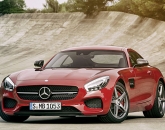Having used the Phantom and the subsequent coupe and convertible spin-offs to re-establish Rolls-Royce as an automotive non- pareil, the company is only now beginning to expand its range with a more affordable model. At around two-thirds the price of the Phantom, depending on specification and local taxes, the new Ghost still sits well above range-topping Mercedes and BMWs. But it is smaller and less arrogant than the Phantom, intended as a car for owners to drive themselves, and which they’d feel comfortable parking on a city street.
Design work began long before the financial crisis, but this the ideal new model for our times. With Rolls-Royce’s Asia-Pacific sales doubling in the first quarter of 2010 by comparison with the same period last year, buyers are plainly prepared to buy luxury cars again. But even if they can afford them, many don’t want to be seen in such ostentatious vehicles. Rolls will be glad it isn’t launching a new Phantom now, but this new Ghost will be a much easier sell.
The Ghost takes many of the Phantom’s stand-out styling cues – particularly the theatrical, rear-hinged, ‘suicide’ rear doors – and incorporates them into a gorgeous but more subtle shape. It’s still a very large car at 5.4 metres in length but it disguises its bulk well. Inside, the cabin is also a little more conventional-looking than the Phantom’s but no less well-executed. The materials used are of a quality beyond what you’d expect to find in a mere car. The leather is so soft and supple it is almost oily to the touch. There is thick, flawless chrome, piano-black gloss veneers, glass switches and solid, fat nuggets of aluminium; the quality and precision here is best compared to bespoke furniture or a sporting gun.
And there’s wit, creativity and intelligence in the design too. As well as the age-old Rolls- Royce features like the Spirit of Ecstasy mascot, the violin-key switches and the ‘power reserve’ gauge in place of a rev counter, there are new ideas to surprise and delight. An umbrella is hidden in each front door. The RR logos in the wheel centres are weighted and rotate independently of the wheels so they’re always the right way up, and the elegant typeface used on the gauges and switches was designed in the 1920s by the artist Eric Gill, who lived in the village of Ditchling, not far from the new factory and a subtle nod to the car’s Sussex origins.
Pages
Click here to see the published article.















